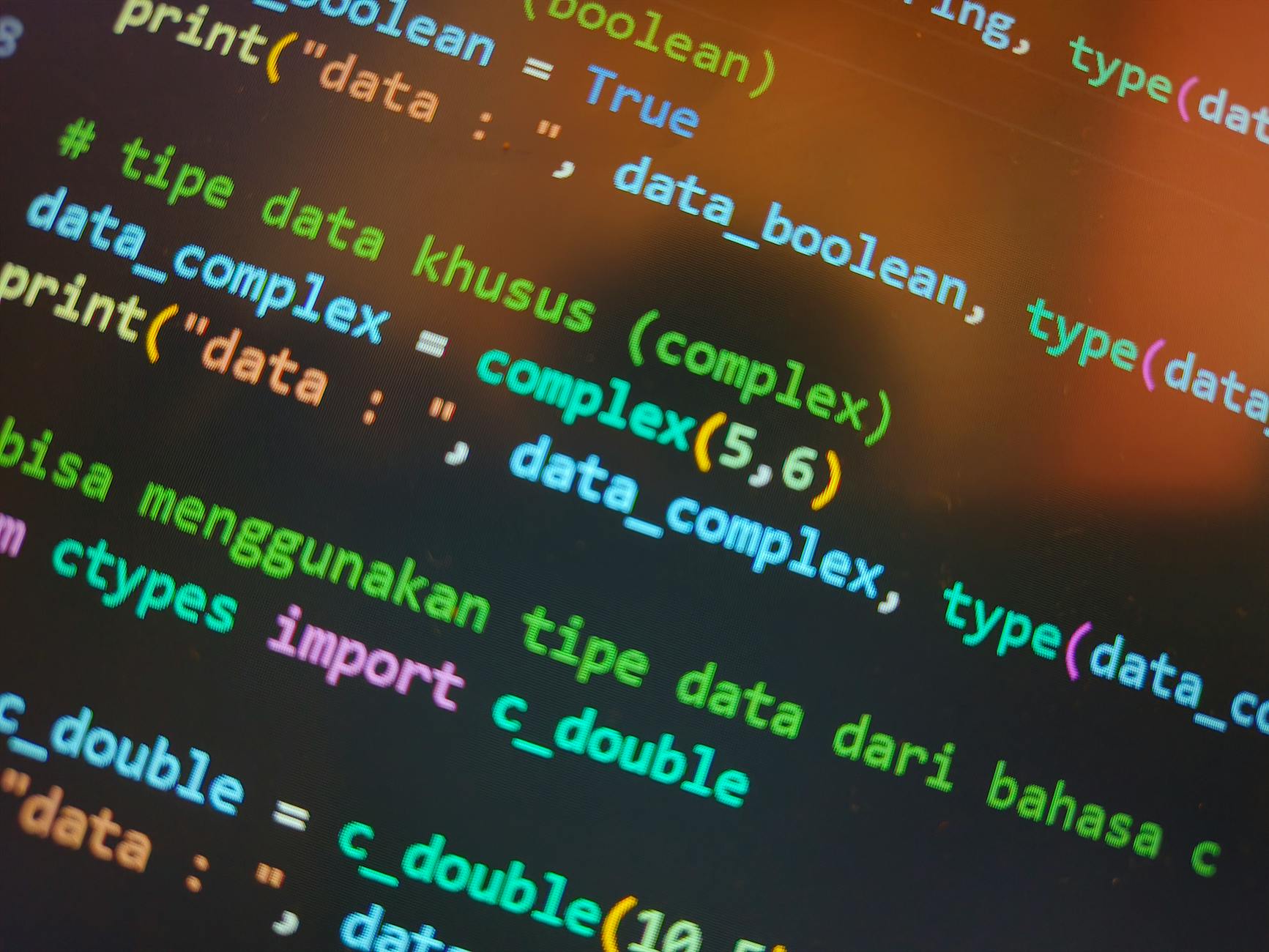In today’s digital age, the spread of misinformation and fake news has become a critical concern. This comprehensive guide will walk you through developing a machine learning model to detect fake news using Python and popular ML libraries.
Table of Contents
- Setting Up the Environment
- Loading and Exploring the Dataset
- Data Preprocessing
- Feature Extraction
- Building Machine Learning Models
- Model Evaluation
- Advanced Techniques
- Deployment Considerations
1. Setting Up the Environment
First, let’s install and import all necessary libraries for our fake news detection project:
# Install required packages
!pip install pandas numpy scikit-learn nltk matplotlib seaborn wordcloud
import pandas as pd
import numpy as np
import matplotlib.pyplot as plt
import seaborn as sns
from wordcloud import WordCloud
# NLP libraries
import nltk
from nltk.corpus import stopwords
from nltk.tokenize import word_tokenize
from nltk.stem import WordNetLemmatizer
# Machine Learning libraries
from sklearn.model_selection import train_test_split
from sklearn.feature_extraction.text import TfidfVectorizer, CountVectorizer
from sklearn.metrics import accuracy_score, confusion_matrix, classification_report
from sklearn.ensemble import RandomForestClassifier
from sklearn.linear_model import LogisticRegression
from sklearn.naive_bayes import MultinomialNB
from sklearn.svm import SVC
# Download NLTK data
nltk.download('punkt')
nltk.download('stopwords')
nltk.download('wordnet')
2. Loading and Exploring the Dataset
Let’s load the fake news dataset and perform initial exploration:
# Load the dataset
df = pd.read_csv('fake_news_dataset.csv')
# Display basic information about the dataset
print("Dataset shape:", df.shape)
print("\nColumn names:", df.columns.tolist())
print("\nFirst few rows:")
print(df.head())
# Check for missing values
print("\nMissing values:")
print(df.isnull().sum())
# Check the distribution of labels
print("\nLabel distribution:")
print(df['label'].value_counts())
# Visualize the distribution
plt.figure(figsize=(8, 6))
df['label'].value_counts().plot(kind='bar')
plt.title('Distribution of Fake vs Real News')
plt.xlabel('Label')
plt.ylabel('Count')
plt.xticks([0, 1], ['Fake', 'Real'], rotation=0)
plt.show()
3. Data Preprocessing
Data preprocessing is crucial for text analysis. We’ll clean the text, remove stopwords, and perform lemmatization:
import re
# Initialize lemmatizer
lemmatizer = WordNetLemmatizer()
stop_words = set(stopwords.words('english'))
def preprocess_text(text):
"""
Preprocess text by removing special characters, converting to lowercase,
removing stopwords, and lemmatizing
"""
if pd.isna(text):
return ""
# Convert to lowercase
text = text.lower()
# Remove special characters and digits
text = re.sub(r'[^a-zA-Z\s]', '', text)
# Tokenize
tokens = word_tokenize(text)
# Remove stopwords and lemmatize
processed_tokens = [lemmatizer.lemmatize(token) for token in tokens
if token not in stop_words and len(token) > 2]
return ' '.join(processed_tokens)
# Apply preprocessing to the text columns
df['processed_text'] = df['text'].apply(preprocess_text)
df['processed_title'] = df['title'].apply(preprocess_text)
# Combine title and text for analysis
df['combined_text'] = df['processed_title'] + ' ' + df['processed_text']
print("Preprocessing completed!")
print(df[['text', 'processed_text']].head())
4. Feature Extraction
We’ll extract features from text using different techniques:
4.1 TF-IDF Vectorization
# Prepare the data
X = df['combined_text']
y = df['label']
# Split the data
X_train, X_test, y_train, y_test = train_test_split(X, y, test_size=0.2, random_state=42)
# TF-IDF Vectorization
tfidf_vectorizer = TfidfVectorizer(max_features=5000, ngram_range=(1, 2))
X_train_tfidf = tfidf_vectorizer.fit_transform(X_train)
X_test_tfidf = tfidf_vectorizer.transform(X_test)
print("TF-IDF features shape:", X_train_tfidf.shape)
4.2 CountVectorizer (Bag of Words)
# Count Vectorization
count_vectorizer = CountVectorizer(max_features=5000, ngram_range=(1, 2))
X_train_count = count_vectorizer.fit_transform(X_train)
X_test_count = count_vectorizer.transform(X_test)
print("Count features shape:", X_train_count.shape)
5. Building Machine Learning Models
Let’s train different machine learning models and compare their performance:
5.1 Logistic Regression
# Logistic Regression
lr_model = LogisticRegression(max_iter=1000)
lr_model.fit(X_train_tfidf, y_train)
# Predictions
lr_pred = lr_model.predict(X_test_tfidf)
# Evaluation
print("Logistic Regression Accuracy:", accuracy_score(y_test, lr_pred))
print("\nClassification Report:")
print(classification_report(y_test, lr_pred))
5.2 Random Forest
# Random Forest
rf_model = RandomForestClassifier(n_estimators=100, random_state=42)
rf_model.fit(X_train_tfidf, y_train)
# Predictions
rf_pred = rf_model.predict(X_test_tfidf)
# Evaluation
print("Random Forest Accuracy:", accuracy_score(y_test, rf_pred))
print("\nClassification Report:")
print(classification_report(y_test, rf_pred))
5.3 Naive Bayes
# Naive Bayes
nb_model = MultinomialNB()
nb_model.fit(X_train_tfidf, y_train)
# Predictions
nb_pred = nb_model.predict(X_test_tfidf)
# Evaluation
print("Naive Bayes Accuracy:", accuracy_score(y_test, nb_pred))
print("\nClassification Report:")
print(classification_report(y_test, nb_pred))
5.4 Support Vector Machine
# SVM
svm_model = SVC(kernel='linear', probability=True)
svm_model.fit(X_train_tfidf, y_train)
# Predictions
svm_pred = svm_model.predict(X_test_tfidf)
# Evaluation
print("SVM Accuracy:", accuracy_score(y_test, svm_pred))
print("\nClassification Report:")
print(classification_report(y_test, svm_pred))
6. Model Evaluation
Let’s visualize the performance of our models:
# Confusion Matrix Visualization
def plot_confusion_matrix(y_true, y_pred, model_name):
cm = confusion_matrix(y_true, y_pred)
plt.figure(figsize=(8, 6))
sns.heatmap(cm, annot=True, fmt='d', cmap='Blues')
plt.title(f'Confusion Matrix - {model_name}')
plt.xlabel('Predicted')
plt.ylabel('Actual')
plt.show()
# Plot confusion matrices for all models
models = {
'Logistic Regression': lr_pred,
'Random Forest': rf_pred,
'Naive Bayes': nb_pred,
'SVM': svm_pred
}
for model_name, predictions in models.items():
plot_confusion_matrix(y_test, predictions, model_name)
# Compare model performances
accuracies = {
'Logistic Regression': accuracy_score(y_test, lr_pred),
'Random Forest': accuracy_score(y_test, rf_pred),
'Naive Bayes': accuracy_score(y_test, nb_pred),
'SVM': accuracy_score(y_test, svm_pred)
}
plt.figure(figsize=(10, 6))
plt.bar(accuracies.keys(), accuracies.values())
plt.title('Model Accuracy Comparison')
plt.xlabel('Models')
plt.ylabel('Accuracy')
plt.ylim(0.8, 1.0)
for i, (model, acc) in enumerate(accuracies.items()):
plt.text(i, acc + 0.005, f'{acc:.3f}', ha='center')
plt.show()
7. Advanced Techniques
7.1 Feature Importance Analysis
# Feature importance for Random Forest
feature_names = tfidf_vectorizer.get_feature_names_out()
importances = rf_model.feature_importances_
indices = np.argsort(importances)[::-1]
# Plot top 20 features
plt.figure(figsize=(12, 8))
plt.title("Top 20 Important Features - Random Forest")
plt.bar(range(20), importances[indices[:20]])
plt.xticks(range(20), [feature_names[i] for i in indices[:20]], rotation=90)
plt.show()
7.2 Word Cloud Visualization
# Create word clouds for fake and real news
fake_news = ' '.join(df[df['label'] == 0]['combined_text'])
real_news = ' '.join(df[df['label'] == 1]['combined_text'])
# Fake news word cloud
plt.figure(figsize=(15, 8))
plt.subplot(1, 2, 1)
wordcloud_fake = WordCloud(width=400, height=400, background_color='white').generate(fake_news)
plt.imshow(wordcloud_fake, interpolation='bilinear')
plt.title('Fake News Word Cloud')
plt.axis('off')
# Real news word cloud
plt.subplot(1, 2, 2)
wordcloud_real = WordCloud(width=400, height=400, background_color='white').generate(real_news)
plt.imshow(wordcloud_real, interpolation='bilinear')
plt.title('Real News Word Cloud')
plt.axis('off')
plt.tight_layout()
plt.show()
7.3 Ensemble Model
from sklearn.ensemble import VotingClassifier
# Create an ensemble of the best models
ensemble_model = VotingClassifier(
estimators=[
('lr', lr_model),
('rf', rf_model),
('svm', svm_model)
],
voting='hard'
)
ensemble_model.fit(X_train_tfidf, y_train)
ensemble_pred = ensemble_model.predict(X_test_tfidf)
print("Ensemble Model Accuracy:", accuracy_score(y_test, ensemble_pred))
print("\nClassification Report:")
print(classification_report(y_test, ensemble_pred))
8. Deployment Considerations
To deploy your fake news detection model in production, consider the following:
8.1 Model Serialization
import joblib
# Save the best performing model
joblib.dump(ensemble_model, 'fake_news_detector_model.pkl')
joblib.dump(tfidf_vectorizer, 'tfidf_vectorizer.pkl')
# Load the model
loaded_model = joblib.load('fake_news_detector_model.pkl')
loaded_vectorizer = joblib.load('tfidf_vectorizer.pkl')
8.2 Prediction Function
def predict_fake_news(text, title=None):
"""
Predict whether a news article is fake or real
"""
# Preprocess the input
if title:
combined_text = preprocess_text(title) + ' ' + preprocess_text(text)
else:
combined_text = preprocess_text(text)
# Transform the text
text_vectorized = loaded_vectorizer.transform([combined_text])
# Make prediction
prediction = loaded_model.predict(text_vectorized)[0]
probability = loaded_model.predict_proba(text_vectorized)[0]
return {
'prediction': 'Fake' if prediction == 0 else 'Real',
'confidence': max(probability),
'probabilities': {
'fake': probability[0],
'real': probability[1]
}
}
# Example usage
test_article = "This is a test news article about recent events..."
result = predict_fake_news(test_article)
print(result)
8.3 API Integration Example
from flask import Flask, request, jsonify
app = Flask(__name__)
@app.route('/predict', methods=['POST'])
def predict():
data = request.json
text = data.get('text', '')
title = data.get('title', '')
result = predict_fake_news(text, title)
return jsonify(result)
if __name__ == '__main__':
app.run(debug=True)
Conclusion
In this tutorial, we’ve built a comprehensive fake news detection system using machine learning. We covered:
- Data preprocessing and cleaning
- Feature extraction using TF-IDF and Count Vectorization
- Training multiple machine learning models
- Model evaluation and comparison
- Advanced techniques like ensemble methods
- Deployment considerations
The ensemble model typically performs best, combining the strengths of different algorithms. Remember that fake news detection is an evolving field, and continuous model updates with new data are essential for maintaining accuracy.
Best Practices
- Regularly update your model with new data
- Monitor model performance in production
- Consider using deep learning models for better performance
- Implement proper data validation and preprocessing
- Be aware of potential biases in your dataset
With these tools and techniques, you’re now equipped to build and deploy your own fake news detection system!






Leave a Reply